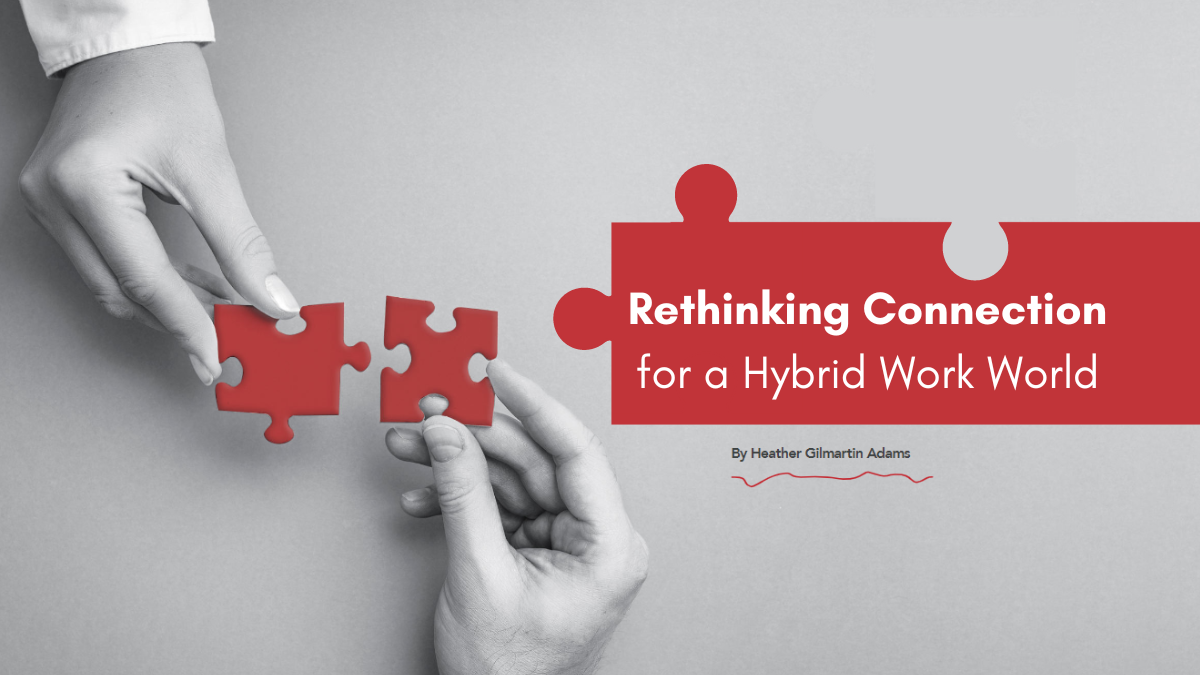Why talk about connection, and why now?
It seems like we just got through the COVID-19 pandemic, and now we’re heading into yet another phase of uncertainty and change. Organizations are facing looming economic uncertainty, potential belt tightening, and possible layoffs.
At the same time, the importance of employee well-being, engagement, and belonging is at a high. Employees want more flexible working arrangements and more support from their organizations—and many are willing and able to walk away from organizations that don’t meet their needs.
In this context, one topic keeps popping up in our conversations with leaders: connection. One leader said she feels bombarded by messages about the importance of connection at work. We feel the same. It’s almost as if the floodgates have opened on a topic that’s been on everyone’s minds for a while.
Connection is one of the hot topics of the day for good reason. It’s one of the linchpins that can help organizations stay agile, keep employees engaged and cared for, and satisfy customers in the crazy, ever-changing environment we all find ourselves in. In fact, in our survey of over 700 employees, we found that organizations with more connection were:
Connection is good for organizations, and it’s good for employees.
You may be reading this paper because you, like many others, have seen data like the above. You may sense that connection is important. You may agree with Matt Gosney, who said:
“[Connection] is how all work gets done. It’s a baseline antecedent to progress.”
— MATT GOSNEY, VP ORGANIZATIONAL DEVELOPMENT, UCHEALTH
And you may want to enable more connection in your organization. But, also like many others, you may be facing challenges.
Please fill out the form to access the content
Resource Sponsored By


